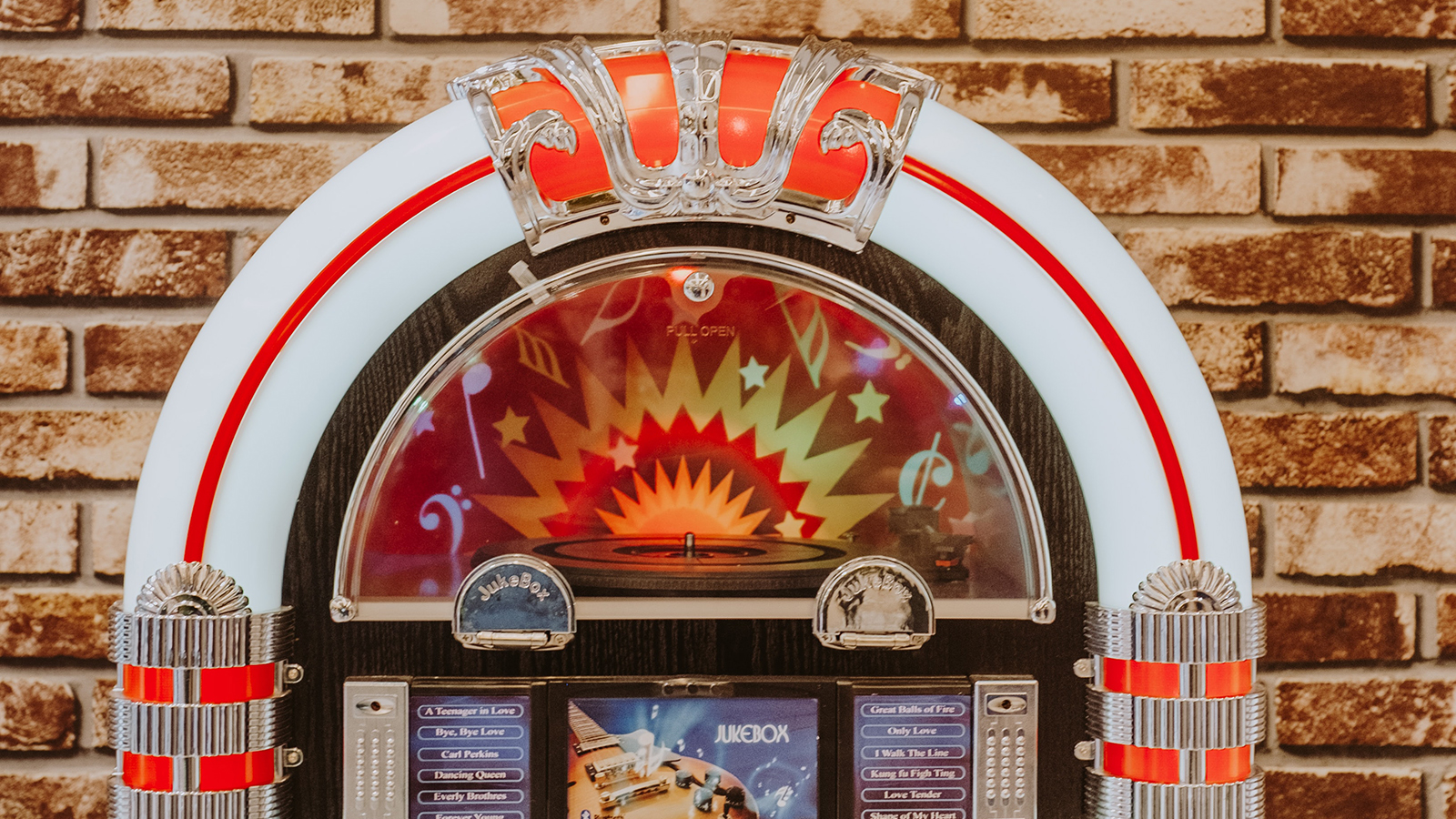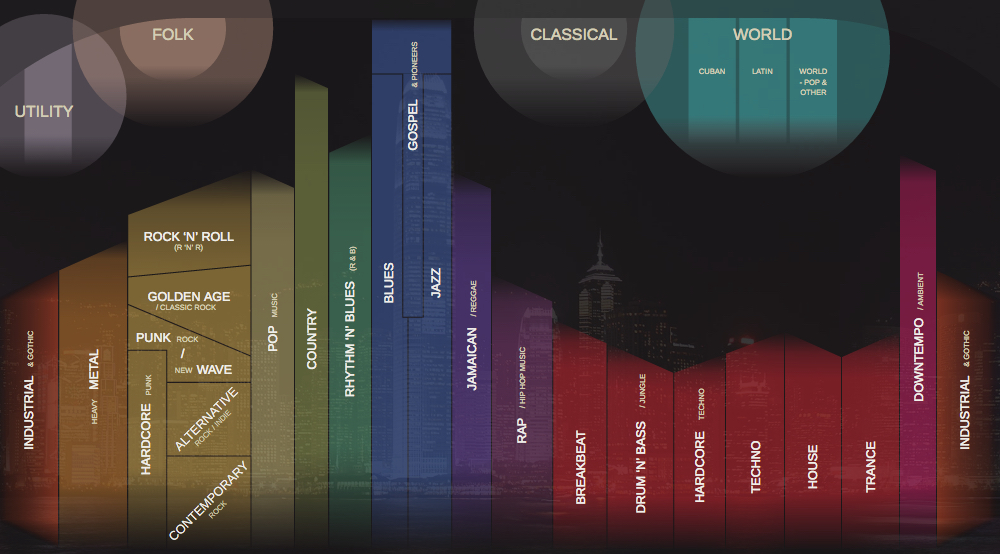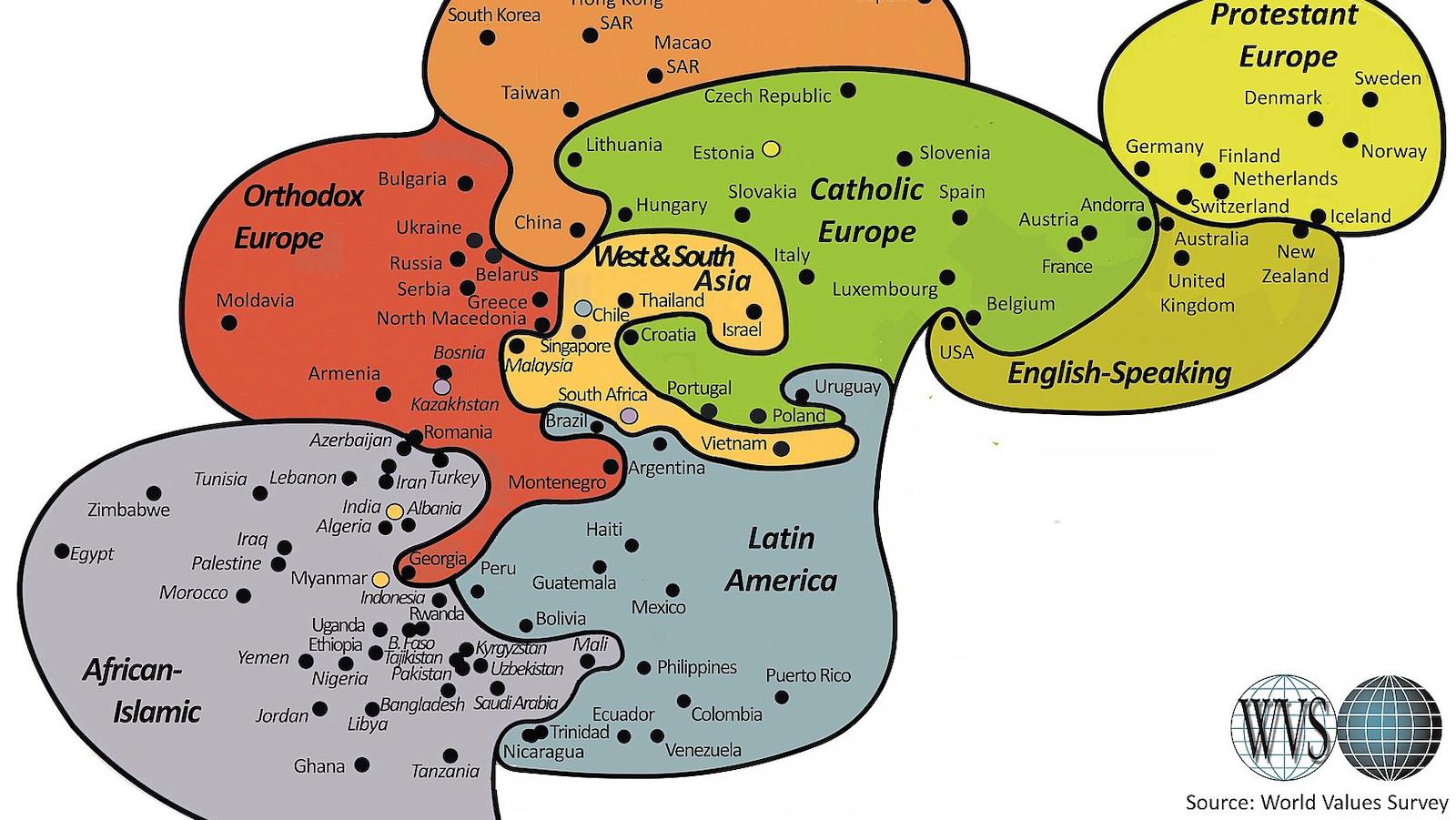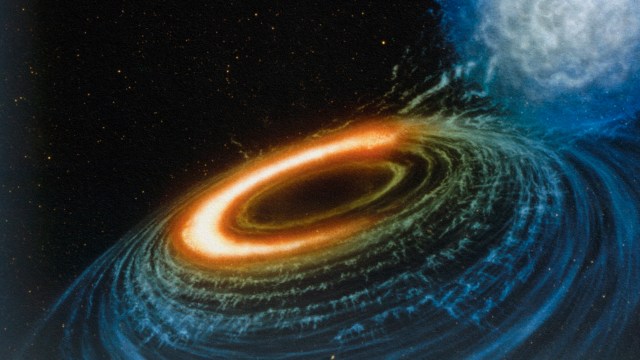Happy, sad, angry, horny: The ultimate map guide to 90s rock music
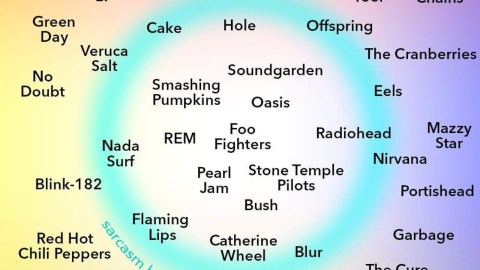
- If you have boredom nostalgia, you were alive in the 1990s, a.k.a. the End of History.
- That bygone era, when Generation X was in its heyday, was perhaps the last to have a music scene dominated mainly by guitar bands.
- This map positions some of the decades’ most famous bands on two mood axes, as well as on a sarcasm belt. Where’s your favorite?
What was special about the 1990s? Both a lot and nothing much, argues Chuck Klosterman in The Nineties: A Book, a retrospective of the decade that straddles the emergence of the internet.
Everything is the same, nothing matters
With the Cold War concluded, it seemed — if only for a few brief years — that America had reached a civilizational end point. Everything would be the same, or permutations of the same, forever. Nothing would ever matter again. Gen X, then supposedly in their prime, certainly were a cohort fit for their time: bored, cynical under-achievers, passively waiting for something, anything, to end the beigeness of everyday life.

Culturally, decades don’t conform to their calendar definitions. Klosterman identifies 9/11 as the event that ended the 90s. That makes a lot of sense: The terrorist attacks on the Twin Towers in New York not only started a global War on Terror, they also kicked off a domestic lurch from apathy and complacency to patriotism and paranoia.
Klosterman’s pick for the decade’s initial bookend is a bit more debatable — not the fall of the Berlin Wall in 1989, symbolizing the end of Communism, but the release of Nirvana’s Nevermind in 1991.
“The video for ‘Smells Like Teen Spirit’ was not more consequential than the reunification of Germany,” he writes. “But Nevermind is the inflection point where one style of Western culture ends and another begins, mostly for reasons only vaguely related to music.”
There’s a lot of music in Klosterman’s decadal digest. That is no wonder, coming as it does from an author whose first book, Fargo Rock City (2001), was a first-person history of heavy metal. Also, in the pre-fragmented culture that the 1990s still were, music seemed more socially relevant than it is today.
Happy, angry, sad, and horny
What the book doesn’t have, though, is this 90s band alignment chart, a map that shows how some of the biggest bands of the decade relate to each other on a Cartesian plane on which an internal mood axis (happy to sad) intersects with a more “customer-facing” one (horny to angry).

Firmly in the middle are the Foo Fighters, loud rock music’s answer to plain vanilla. While there’s nothing wrong with plain vanilla, the band’s position at the dead center of this map per definition means that all the other bands are happier, sadder, angrier, or hornier than Dave Grohl’s outfit. Somehow, that doesn’t feel like a compliment.
No 90s band was angrier than Rage Against the Machine — few would dispute that assessment. Certainly not their legion of fans, who chanted in unison with front man Zack de la Rocha: “F*** you, I won’t do what you tell me,” most without seeing the irony in that.
Hooray for Bloodhound Gang
On the other end of that axis, Bloodhound Gang dialed the horny up to 11, with songs that were risqué and funny, in a frat movie kind of way. Who can forget lyrics like: “Put your hands down my pants and I bet you’ll feel nuts”? No really, who can? Because I’d like to.
There is lots of competition for saddest 90s band. Mazzy Star, infused with Hope Sandoval’s spaced-out mezzo-soprano, falls right in the middle of the sad outliers, as far from angry as it was from horny. The Cranberries are equally sad, but angrier. Garbage is equally sad, but hornier. So far, so defendable. But are The Cure hornier than Garbage? That may be harder to argue for than against.
Perhaps this two-dimensional model for music appreciation simply has its limits. Or perhaps occasionally, the model is just plain wrong. Morphine, horny? Is that because of the sax? (Double pun intended.) There’s a lot to argue here, not just about which band goes where, but also why they left out (insert your favorite 90s band here).
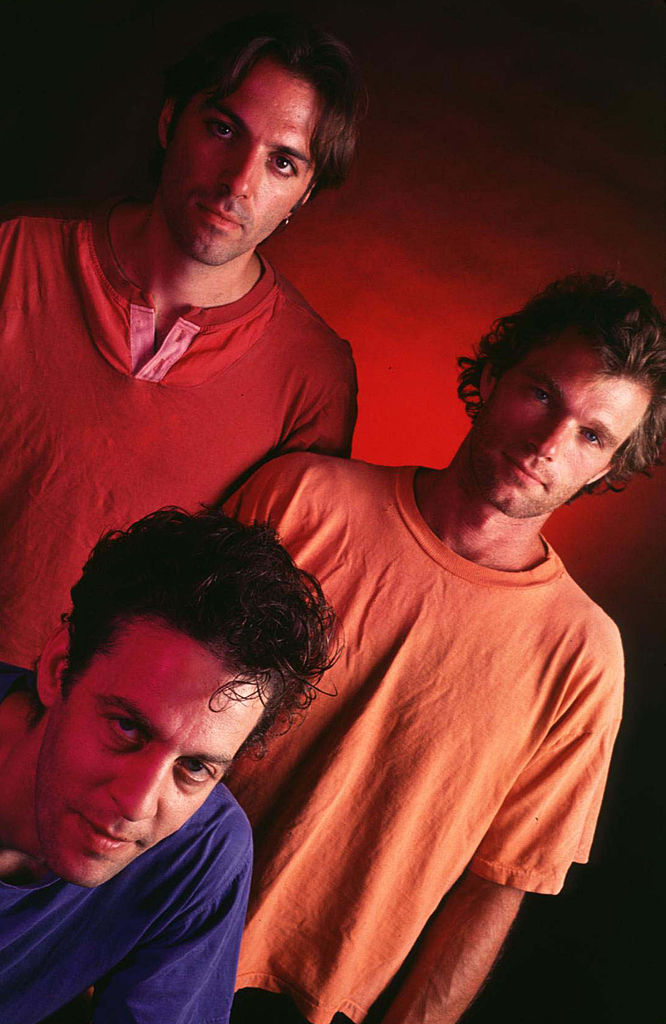
Whatever its shortcomings, this rockscape has a redeeming feature that, in keeping with its theme, is so 90s: a sarcasm belt. It forms a perfect circle touching bands in every quadrant, from the Flaming Lips (happy/horny) to Blur (horny/sad) to Offspring (sad/angry) and to Cake (angry/happy).
Sarcasm was a way of life
Sarcasm, saying one thing while meaning the exact opposite, is hard to interpret on social media, so it’s a dying conversational art. Back then, this particular flavor of mockery was still vigorously thrashing about in popular culture. Perhaps in retrospect, it wasn’t waving but drowning.
Our favorite bit of 90s lyrical sarcasm? When Thom Yorke sings, “Such a pretty house / And such a pretty garden,” on Radiohead’s song “No Surprises.” Why, you ask? Because he, like, doesn’t mean it, kids. He. Doesn’t. Mean it!
Strange Maps #1209
Image by Lana / LadyDragonFly. Also check out her 80s band alignment chart. But that’s a whole different can of worms.
Got a strange map? Let me know at strangemaps@gmail.com.
Follow Strange Maps on Twitter and Facebook.
